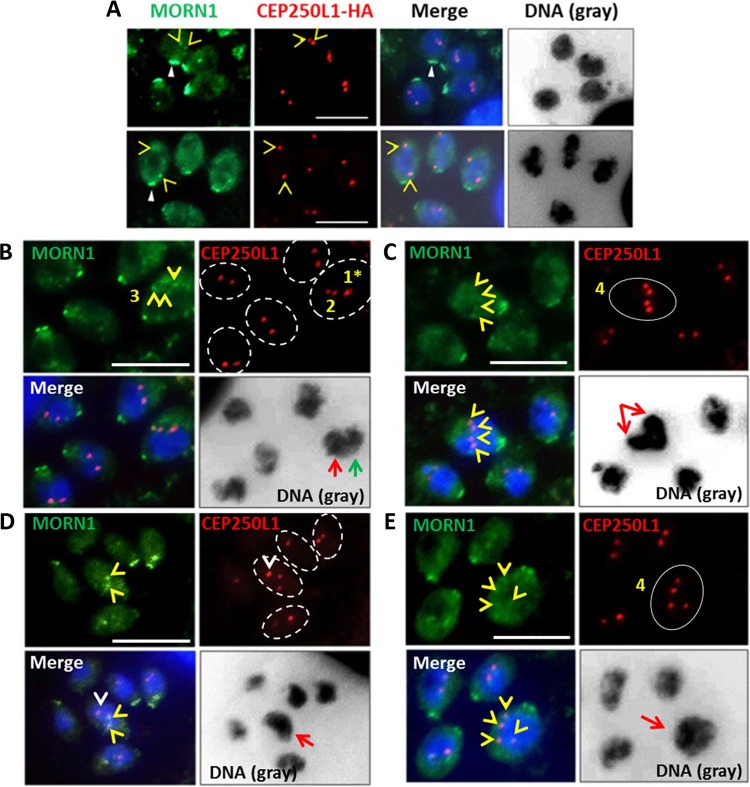FIG 6 .
Centrocone (MORN1) and centrosome dynamics define the mechanistic basis for the production of multiple progeny. MORN1 is a marker of the nuclear centrocone (open yellow arrowheads), as well as the basal complex (closed white arrowheads). (A) In the wild-type parasites, the centrocone is in close apposition to the centrosome inner core (CEP250L1-HA). The images in the top and bottom rows exhibit the association of the centrocone with the centrosome in early and late S phase, respectively, which facilitates engagement of the genome with the centrosome. A balanced stoichiometry between the centrocones and centrosomes facilitates mitosis and karyokinesis. (B) While 4 of the parasites in the vacuole possess correctly organized centrosome-centrocone pairs, the fifth organism appears to have reduplicated one centrosome (CEP250L1-HA, DNA, red-line arrow) and the other remains poised for division. (A and B) In both panels, second reduplications of one or both centrocone-centrosome pairs appear to be happening in the nuclei that have undergone first-round karyokinesis, similar to a schizogony-like replication strategy. (C) Two perpendicularly arranged nuclei exhibiting the reduplication of the centrosome inner core (CEP250L1-HA) appear matched with the centrocone marker MORN1 (open yellow arrowheads), suggesting that they are capable of mitosis. Note the intensity of the nuclear signal, suggestive of more DNA content than in 1N ploidy. (D) The parasite in the center of the field exhibits two nuclear MORN1-labeled centrocones (open yellow arrowheads) but 3 distinct centrosome inner cores (CEDP250L1-HA). Notably, the orphan centrosome (open white arrowhead) renders it incompetent for the engagement of the spindle checkpoint. The nucleus in the parasite (red-line arrow) appears to be a large and polyploid nuclear mass. (E) Experimental evidence also demonstrates that one gravid parasite that has four inner core spots (CEP250L1-HA, red, circled in white) and four matching centrocone spots (MORN1, green) contains a very large polypoid nucleus (DNA, red arrow), suggesting that they are primed for making 4 progenies. (D and E) Both patterns of labeling are suggestive of an endopolygeny-like replication event in process, as in both cases, mitosis may have been completed even though karyokinesis is yet to happen. Scale bars = 10 µm.

